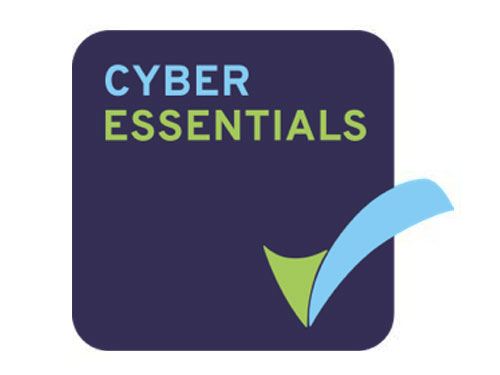Insights for Microsoft end users
Whatever the Microsoft Cloud role, use our guide to benchmark your salary or contact rate, or to uncover what you should be paying employees in your team.
Attraction and retention
To ensure you’re offering a package that attracts Microsoft professionals, it’s essential to understand what candidates seek in their ideal roles. What draws them to a position? What prompts them to leave? And how can Microsoft end users appeal to talent from across the ecosystem?
In this section, we’ll examine what attracts Microsoft professionals to new career opportunities, the perks and benefits they prioritize, and how Microsoft customers secure the talent needed to maximize their technology investments.
What encourages a candidate to take a role?
54%
44%
38%
36%
| For a better work-life balance | 26% |
| The chance to work in a challenging role or on a challenging project | 23% |
| To escape a toxic company culture/for a better company culture | 18% |
| To work for a prestigious organization with a great reputation | 17% |
| To gain flexibility in my working hours | 17% |
| To pursue a leadership position | 16% |
| To work in a different industry | 15% |
| The new role was a promotion | 15% |
| To work for an organization with values that align with my own | 14% |
| The opportunity for hybrid or remote flexibility | 11% |
| Other | 9% |
| For a better work-life balance | 26% |
| The chance to work in a challenging role or on a challenging project | 23% |
| To escape a toxic company culture/for a better company culture | 18% |
| To work for a prestigious organization with a great reputation | 17% |
| To gain flexibility in my working hours | 17% |
| To pursue a leadership position | 16% |
| To work in a different industry | 15% |
| The new role was a promotion | 15% |
| To work for an organization with values that align with my own | 14% |
| The opportunity for hybrid or remote flexibility | 11% |
| Other | 9% |
The importance permanent employees place on workplace benefits has dropped slightly, with 80% of respondents telling us that benefits play an important part in their decision to accept a role, compared to 87% in our previous findings.
What perks entice a candidate to accept a role?
We asked respondents to select the top three perks that would influence their decision to accept a job offer. The most sought-after perks focus on creating a positive work environment that recognizes employees for their hard work and promotes a healthy work-life balance. The leading perks that are likely to motivate candidates to take on a new role include performance-based bonuses, remote work options, and flexible working arrangements. Other valued benefits include:
Are employees looking to change employer?
Intent to move employer is higher among those unsatisfied with aspects of their role.
Burnout also has an impact on individuals’ intention to leave an employer. 40% of those who have suffered burnout express some intention to switch, compared to 35% who have not experienced burnout but are considering a move.
What motivates an employee to consider a new role?
| An increase in earnings | 60% |
| Lack of career and promotional prospects | 37% |
| Lack of leadership and vision | 26% |
| Need new challenges | 25% |
| Working environment/company culture | 24% |
| I'm underutilized in my current role/company | 24% |
| I'm underappreciated in my current company | 21% |
| I want to pursue more interesting/valuable work | 20% |
| To relocate to another country | 16% |
| Lack of exposure to latest Microsoft products | 15% |
| An increase in earnings | 60% |
| Lack of career and promotional prospects | 37% |
| Lack of leadership and vision | 26% |
| Need new challenges | 25% |
| Working environment/company culture | 24% |
| I'm underutilized in my current role/company | 24% |
| I'm underappreciated in my current company | 21% |
| I want to pursue more interesting/valuable work | 20% |
| To relocate to another country | 16% |
| Lack of exposure to latest Microsoft products | 15% |
On average, those looking to change roles for a pay increase would expect a 24% increase.
How likely are remote professionals to accept a new role that involves working in the office five days a week?
Among those who are currently offered some level of remote working, 41% would be likely to switch to a role that involves working in the office five days a week.
41%
22%
37%
Takeaways for Microsoft users
With only 46% of Microsoft Cloud professionals expecting to remain with their current employer over the next year, the data shows that there are opportunities for businesses to attract new talent and expand their Microsoft teams.
To make your organization more appealing to those seeking new roles, remember that flexibility is a top priority for high-caliber professionals. Just 41% of Microsoft professionals say they would consider an entirely office-based role, giving companies that offer flexible work arrangements a strong competitive edge.
Unsurprisingly, given the economic challenges faced by much of the world today, a higher salary remains the top motivator for job seekers, with 60% of respondents reporting it as their primary reason to look for new opportunities. However, many also cited limited promotion and development options as a key factor, signaling that businesses can stand out by providing clear career pathways and growth support. Highlighting these career advancement opportunities can help attract the ambitious, growth-oriented professionals highly sought after by today’s Microsoft customers.
Motivation to move from a partner to an end user
More than half (54%, comparable to our previous study) of partner employees would consider working for an end user and cited the following as factors that would encourage them to make this move:
64%
56%
42%
| Possibility to develop skills across different Microsoft products | 40% |
| More stability | 37% |
| Ownership over a project/system | 36% |
| Consistency | 33% |
| Better career progression opportunities | 33% |
| Better training and learning opportunities | 31% |
| Less stress | 25% |
| Less travel | 21% |
| Other | 8% |
| Possibility to develop skills across different Microsoft products | 40% |
| More stability | 37% |
| Ownership over a project/system | 36% |
| Consistency | 33% |
| Better career progression opportunities | 33% |
| Better training and learning opportunities | 31% |
| Less stress | 25% |
| Less travel | 21% |
| Other | 8% |
More than half (54%) of Microsoft professionals currently working for a partner expressed a willingness to switch to an end user role, especially if it offers a better work-life balance and remote work options.
This indicates that many job seekers in the partner space are looking for roles with increased flexibility that allows for a better balance between work and personal life. End user organizations aiming to attract these professionals can gain an advantage by promoting flexible working arrangements and a commitment to improving work-life balance.
We also asked the 26% (up from 24%) of respondents who could not see themselves making the move to an end user why they wouldn’t consider it, and their reasons were:
While achieving a better work-life balance through remote or flexible working is a high priority for partner employees, career development is also a key aspiration. To boost retention, partners should prioritize providing employees with as much flexibility as possible in their work schedules, such as remote work options when not required onsite with clients. But regardless of where employees are working, they should always have a clear understanding of their career progression opportunities within the organization and the steps needed to achieve it.
With many partner organizations already prioritizing certifications, leaders can leverage this foundation to create well-defined development pathways across their teams. Certification efforts should not only align with business needs but also demonstrate an investment in employees’ careers. Rewarding certification and skill development, and setting clear growth targets, can empower employees to advance their skills for their benefit.
Discover what motivates end user employees to work for a partner organization.
What do employers need to prioritize to maximize employee happiness and retention?
How satisfied are employees?
| Satisfied | Neutral | Dissatisfied | |
|---|---|---|---|
| Colleagues | 79% | 16% | 5% |
| Working hours | 71% | 21% | 8% |
| Benefits | 65% | 22% | 12% |
| Company culture | 60% | 28% | 13% |
| Training and development | 52% | 24% | 24% |
| Career progression | 49% | 30% | 21% |
Colleagues
| Satisfied | Neutral | Dissatisfied |
|---|---|---|
| 79% | 16% | 5% |
Working hours
| Satisfied | Neutral | Dissatisfied |
|---|---|---|
| 71% | 21% | 8% |
Benefits
| Satisfied | Neutral | Dissatisfied |
|---|---|---|
| 65% | 22% | 12% |
Company culture
| Satisfied | Neutral | Dissatisfied |
|---|---|---|
| 60% | 28% | 13% |
Training and development
| Satisfied | Neutral | Dissatisfied |
|---|---|---|
| 52% | 24% | 24% |
Career progression
| Satisfied | Neutral | Dissatisfied |
|---|---|---|
| 49% | 30% | 21% |
The percentage of respondents satisfied with their career progression has dropped to 49%, from 52% in our last study. More respondents are reporting a lack of satisfaction with their training and development too, with 24% now dissatisfied (compared to 22% last time). On a more positive note, colleagues continue to be rated highly by their peers, with 79% of respondents satisfied with their teammates, up from 77% in our previous study.
How do employees rate their job satisfaction year over year?
| Satisfied | Neutral | Dissatisfied | |
|---|---|---|---|
| 2025 | 62% | 25% | 13% |
| 2024 | 65% | 23% | 13% |
| 2023 | 70% | 21% | 10% |
| 2022 | 66% | 22% | 11% |
| 2021 | 65% | 24% | 11% |
Job satisfaction among Microsoft professionals has fluctuated over the past five years. However, our latest findings show a decline compared to the previous survey, and a further drop from the findings before that. Will this downward trend continue into next year? And how might current broader economic events influence respondents’ ratings next time?
2025
| Satisfied | Neutral | Dissatisfied |
|---|---|---|
| 62% | 25% | 13% |
2024
| Satisfied | Neutral | Dissatisfied |
|---|---|---|
| 65% | 23% | 13% |
2023
| Satisfied | Neutral | Dissatisfied |
|---|---|---|
| 70% | 21% | 10% |
2022
| Satisfied | Neutral | Dissatisfied |
|---|---|---|
| 66% | 22% | 11% |
2021
| Satisfied | Neutral | Dissatisfied |
|---|---|---|
| 65% | 24% | 11% |
Expert Insight
The concept of Employee Experience has evolved significantly with Microsoft 365’s integration of AI and modern workplace tools. At its core, it encompasses all interactions employees have throughout their employment journey, with particular emphasis on “moments that matter” – critical touchpoints that create lasting positive memories.
Suffice to say, 365 has transformed Employee Experience through AI-driven tools in Microsoft Viva and Copilot, enhancing collaboration and automating workflows for a seamless digital workspace. Unlike general AI tools like ChatGPT, Copilot in Viva is purpose-built for workplace optimization, enabling new ways for employees to interact with their digital environment.
The Viva suite has also redefined learning and development. With Viva Learning, employees receive personalized learning paths through AI-powered recommendations, while Viva Skills allows precise tracking and development of competencies based on LinkedIn profiles and required skillsets. This creates a targeted, impactful professional development experience, with Viva Learning acting as a comprehensive search engine for both formal and informal learning.
Effective implementation of these tools requires a robust technical foundation, including Viva Insights Premium and skilled HR Data Analysts proficient in Power BI. These analysts play a crucial role in translating engagement metrics into insights that drive organizational improvement and measure productivity gains from Copilot investments.
As workplaces increasingly embrace digital transformation, AI and hybrid skills are becoming essential. Future workplaces demand both technical skills and adaptability, with AI-related competencies considered critical by 43% of executives. Investing in employee experience directly impacts business performance, as positive experiences correlate with higher engagement and loyalty—97% of employees report a desire to stay, and 96% show increased engagement, driving productivity and customer satisfaction.
Implementing these solutions successfully requires a holistic strategy that aligns technology with culture and workspace design, and clear success metrics, feedback mechanisms, and flexibility are essential to creating this comprehensive framework. The AI revolution is challenging and demanding, so organizations must focus on adaptability and attentiveness to ensure their workforce remains engaged and productive in an increasingly digital workplace.
How can you boost employee satisfaction?
Company culture
Cultivating a positive culture requires employers to prioritize recognition, open communication, transparency, and respect. Celebrating achievements—whether big or small—helps employees to feel valued and motivated to contribute their best work, and acknowledging these accomplishments not only boosts morale but also reinforces a sense of purpose and belonging. Enhance this further by cultivating an environment where employees can freely share ideas and feedback is always constructive. Elsewhere, transparency around decision-making builds trust by ensuring employees always understand the “why”, engaging them in company initiatives and business goals more effectively. But above all, your company culture needs to be rooted in respect, creating an inclusive workplace where everyone is empowered to be their happiest, most authentic selves.
Training and development
Time and time again, Microsoft professionals demonstrate their passion for their learning and development—yet year after year, employers continue to fall short in sufficiently supporting their team’s professional growth. The Microsoft ecosystem evolves quickly, meaning employers must ensure in-house skills remain at the cutting edge not only to fulfil professionals’ desires, but also to maximize the value of their investment in the tech. This means that it’s not just about keeping up with the latest trends but futureproofing the business for long-term success. When employees feel supported in their training and development, they are more likely to stay engaged, productive, and committed—all to the benefit of their overall satisfaction. So, employers should be keen to foster this by allocating time for upskilling, offering financial support for certifications, and establishing mentorship programs that encourage knowledge-sharing and support internally.
Career progression
When acquiring these new skills, it’s only natural for employees to want assurance that there’s room for growth and opportunities to advance within the organization. Understanding what the next career milestone looks like, what steps they need to take to reach it, and the support available along the way keeps employees motivated and focused, so it’s essential that they can clearly see their path forward. Career progression within your team should be well-defined, communicated transparently, and accessible to everyone, ensuring that the opportunity for advancement is fair and achievable for all.
Curious about the training and development that Microsoft professionals want from their employers?
How satisfied are employees with their salary?
Under two-thirds (57%) of professionals are satisfied with their salary, compared to half (51%) in our previous survey, while 21% (up slightly from 20%) of respondents are dissatisfied.
How have employees rated their salary satisfaction year over year?
| Satisfied | Neutral | Dissatisfied | |
|---|---|---|---|
| 2025 | 57% | 22% | 21% |
| 2024 | 51% | 29% | 20% |
| 2023 | 62% | 23% | 15% |
| 2022 | 59% | 23% | 17% |
| 2021 | 29% | 23% | 17% |
2025
| Satisfied | Neutral | Dissatisfied |
|---|---|---|
| 57% | 22% | 21% |
2024
| Satisfied | Neutral | Dissatisfied |
|---|---|---|
| 51% | 29% | 20% |
2023
| Satisfied | Neutral | Dissatisfied |
|---|---|---|
| 62% | 23% | 15% |
2022
| Satisfied | Neutral | Dissatisfied |
|---|---|---|
| 59% | 23% | 17% |
2021
| Satisfied | Neutral | Dissatisfied |
|---|---|---|
| 59% | 23% | 17% |
- My salary is below the market rate
- Given my expertise, experience, and skills, I am earning less than I should
- My pay has not kept pace with inflation
- My salary does not reflect the evolving responsibilities of my role
- I haven’t had a salary review or pay increase in years
- Considering my workload, I am underpaid




